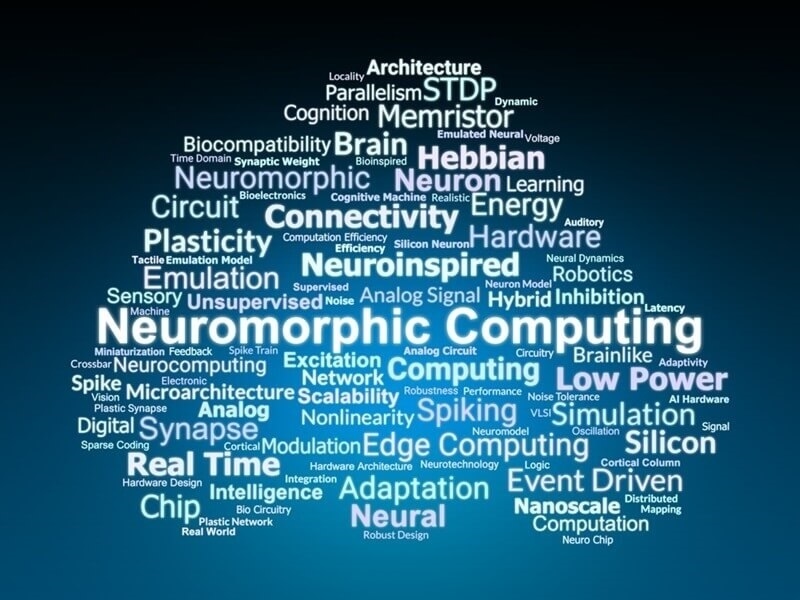
Neuromorphic computing isn’t yet its own stock market category, but saying there are no opportunities here is inaccurate. The technology is already making its way into portfolios, whether through major tech firms investing heavily in research or smaller, riskier ventures aiming for breakthroughs.
Public companies like Intel, with its Loihi platform and “Hala Point” system, and IBM, with its TrueNorth and NorthPole chips, are pushing development forward. Qualcomm and Samsung are also weaving neuromorphic-inspired designs into mobile and edge AI. For those seeking pure-play exposure, BrainChip Holdings stands out with its Akida chip for low-power edge AI.
Beyond neuromorphic computing stocks, opportunities come through venture capital, indirect exposure via large-cap tech shares, and, as the market matures, ETFs focused on edge computing or next-gen AI. Growth drivers include demand for energy-efficient AI, autonomous vehicles, IoT, and progress in spiking neural networks. The market is still young, but it’s maturing fast.

Artificial intelligence is everywhere now—finance, healthcare, cars, even consumer apps. But AI models need more efficient chips. That’s where neuromorphic comes in. It can deliver the kind of power and energy savings traditional silicon just can’t. Think about it: a chip that learns and adapts like a brain, but fits in a sensor or wearable. The attraction is obvious.
Of course, building this stuff is anything but straightforward. You need computer scientists, neuroscientists, and hardware engineers all speaking the same language. Designing algorithms that mimic neurons and then embedding them into chips is complicated, expensive, and often slow. Add in the fact that existing software isn’t always compatible, and you can see why adoption takes time.
That’s the tension right now. The opportunity is huge, but the complexity is real. Anyone watching the neuromorphic computing market closely understands this duality—it’s why the sector is exciting and a little nerve-racking all at once.
One of the strongest trends is pushing computing closer to where data is generated—the so-called “edge.” Neuromorphic processors are perfect for this. Instead of shipping data back and forth to big cloud servers, devices like cameras, industrial sensors, or even cars can process information on the spot. That reduces lag, saves bandwidth, and even improves privacy.
Another trend is efficiency. Traditional GPUs can be power-hungry monsters. Neuromorphic chips, by contrast, sip power sparingly. This makes them a natural fit for portable or embedded devices. For companies looking at edge AI, the appeal is obvious. It’s no wonder neuromorphic computing hardware is getting more attention with every passing year.
When you look at the breakdown of the market, hardware is where the big money is going. Analysts expect strong growth in neuromorphic hardware over the next decade. Why? Because hardware is the foundation—without it, there’s nothing to run or scale.
The companies building actual neuromorphic processors are the ones with the clearest path to revenue. Of course, software and services matter too, but hardware is where the rubber meets the road. Investors watching neuromorphic computing companies are naturally keeping a closer eye on those with real, physical chips already on the market.
On A Similar Note: Investment Risk Tolerance: Align Your Portfolio Smartly
The deployment story is also interesting. Yes, cloud still matters, but edge is the star. Edge-based deployment is projected to grow rapidly in the coming years. That’s enormous.
Why? Think of an autonomous car. It can’t afford to send data off to a cloud server, wait a second, and then decide whether to brake. It needs local processing, instantly. The same goes for robotics in factories or augmented reality devices that need to respond in real time. This is where neuromorphic computing at scale comes into play. Chips in millions of devices, working instantly, without waiting for a round trip to the cloud.
North America currently leads the market, thanks to its mix of big tech firms, investors, and research-heavy universities The U.S. in particular has government-backed initiatives pushing advanced semiconductor development, which certainly helps.
But Europe isn’t far behind, with collaborations between institutions and tech companies pushing forward research. And Asia, especially China, is pouring money into new semiconductor architectures. In short: the competition is global. Anyone betting on this field has to think globally too.
Intel and IBM remain two of the biggest names in the space, with significant investments in neuromorphic computing. Intel has been running projects like Loihi—its experimental neuromorphic chip—while IBM has been building hardware and neural simulation frameworks. These are the giants.
Smaller names include Qualcomm, HP Enterprise, General Vision, Knowm Inc., and BrainChip Holdings. BrainChip, in particular, has earned attention for producing its Akida neuromorphic processor—real-world silicon, not just a research paper. That’s why investors who want exposure to smaller, more speculative neuromorphic computing companies often keep BrainChip on their radar.
The headlines keep coming. Recently, IBM has unveiled new energy-efficient AI accelerator chips designed to support a variety of AI models. The focus was on supporting a variety of AI models while slashing power use—exactly the kind of advancement the industry needs.
Intel has also partnered with research institutions to scale up neuromorphic systems capable of simulating increasingly large networks of neurons. For context, that’s the largest neuromorphic research system yet attempted.
These developments matter because they add credibility. Each new launch or partnership reminds the market that this isn’t just hype—it’s a field advancing step by step.
You May Also Like: Green Investing: Growth, Impact & Sustainable Returns
Neuromorphic computing may still feel experimental, but it’s clearly moving beyond theory and into practical applications. With giants like Intel, IBM, Qualcomm, and Samsung investing alongside smaller innovators such as BrainChip, the ecosystem is broadening. For investors, that means options: indirect exposure through established tech firms, riskier bets on pure-play companies, or even private venture opportunities as startups push the boundaries.
The growth potential is hard to ignore. Demand for energy-efficient AI, the rise of edge computing, autonomous systems, and spiking neural networks all point to a market that could look very different just a few years from now. Challenges remain — from high development costs to compatibility issues — but momentum is undeniable.
For those watching closely, neuromorphic computing is no longer just a futuristic concept. It’s a space where the foundations are being laid today, and the winners could shape the next generation of AI.
This content was created by AI